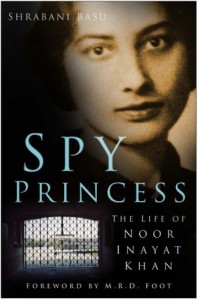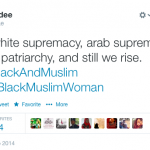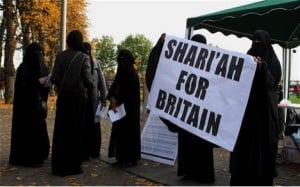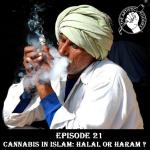I will confess that I first became aware of Noor Inayat Khan, also known as Madeline, only quite recently, that is, during the campaign in 2011 to commemorate her, before it was discovered that she had already been commemorated. I remember looking up her story at the time and coming across her biography, Spy Princess: The Life of Noor Inayat Khan by Shrabani Basu. I did plan on reading the book, but reviews at Goodreads, which complained about the amount of detail and the tone of the first half of the biography, put me off. This is only because there’s something about detailed biographies that I find discomfiting. I keep finding myself asking, “yes, but how do you know?“ I’m not sure whether to suspend disbelief or obsessively fact-check. I’m not a big biography reader.

Since I haven’t seen this docu-drama yet, I can’t say much about it, other than that I really want to see it. But reading some of the reviews and articles about Khan, I was struck by a repeating reference to her and her father’s Sufism. Again and again we are informed that Khan was “raised in the pacifistic Sufi Islamic tradition in France.” Or that, she was “brought up in the mystical Sufi tradition” and therefore “abhored violence.” In other reviews, descriptions of her deeds of derring-do are tempered with reminders that she was “not a natural warrior”:
“It may have been tales of his ferocity in battle told by her father, Hazrat, which steeled Noor to carry a pistol through the streets of Paris, but she was not a natural warrior. Suffused with Sufism’s creed of non-violence, she studied child psychology at the Sorbonne and became a children’s writer in the 1930s.”
Sufi! Sorbonne! Children’s writer! Of course I’ve heard the Sufi as the warm and cuddly version of Islam before. I would wager most Muslims in this day and age have. You know the question that begins “But the, what are they called, those mystic people? They whirl around and don’t get dizzy?” Or, worse, the assumption that Sufi is a category entirely separate from “Sunni” and “Shia,” when, in fact, “Sufism is more accurately described as an aspect or dimension of Islam” rather than a sect on its own. I’ve tried talking about shariya and tariqa, as the outward (shariya) and inward (tariqa) path to God, but putting the two in the same sentence seems to make people nervous or confused or I don’t know. Maybe I’m just very bad at explaining. I once made the disastrous mistake of talking about Youssef Chahine’s 1998 film al-Masir (Destiny) which might as well be summed up as Ibn Rushd v.s Al Ghazali. I got the bewildered response, “So wait, that Sufi guy was the dogmatist?” Not many people know that Hasan al-Banna, the founder of the Muslim Brotherhood (that old bogeyman, now deemed “terrorist” by the Egyptian government again) was heavily influenced by Sufism and was a member of a Sufi order when he was younger. Sufism is different for different people, and Sufis, like all Muslims, like all humans, can be both good and bad, mystical and dogmatic, pacifist and not-so-pacifist, sometimes at the same time.
I think maybe the problem is that we (and I am now doing that awful terrible thing of using “we” to refer to the category “Muslims”) play into this dichotomy of the Good and Bad Muslim. For example, on the website for the docu-drama, Dalia Mogahed is quoted as saying:
“Enemy of the Reich: The Noor Inayat Khan Story reveals the courage, strength and compassion of Noor Khan as her Muslim faith inspired her to risk everything to battle Nazi oppression. She is a source of inspiration for anyone working for freedom and justice today.”
I admire Dalia Mogahed’s cool, calm on-pointness enormously – see this video of her debating Irshad Manji, for example – but I am not sure what to do with the idea that we can claim decisively that Khan’s “Muslim faith,” rather than simply her humanity, “inspired her to risk everything.”
If I were to pinpoint the source of my unease, it is that the cause and effect seem kind of limiting. Attributing goodness to religious observance, to being inspired by faith, simply inverts rather than breaks down the religiously-motivated dynamic, which turns everything into “good Muslim” and “bad Muslim.” Just like Bad Muslims are driven by their mad ideological fanatical fundamentalist faith rather than a range of complex human emotions, Good Muslims are motivated by “soft” Islam, adulterated, mystical, cultural, whatever you want to call it. Then you can start putting down labels neatly in each column. Pacifistic and Sufi go under good Muslim, of course, as do “cultural Muslim,” “progressive Muslim” and so on and so forth. This makes the “look, there are good Muslims” game a whole lot easier for anyone who wants to get involved.
This is also what disturbs me about Robert Satloff’s book, Among the Righteous: Lost Stories From the Holocaust’s Long Reach into Arab Lands, which is mentioned alongside the docu-drama in this article. The book is described as “a quest to find the Arab hero whose story will change the way Arabs view Jews, themselves, and their own history.” This seems like a pretty lofty target. How exactly will this quest for an “Arab hero” change the way Arabs view Jews and how Arabs view themselves, assuming either are uniform attitudes, and assuming these are entirely seperate categories? What does it prove? Who needs this proof, to validate what?
Rather than setting out on a quest for an “Arab hero” it seems to me that it makes more sense to look at this comprehensively, to look at the good, the bad and the ugly, as Gilbert Achcar has done in his study of Arabs and the Holocaust. Of course, Satloff does look at not-so-heroic Arabs on his way to finding the good ones, but the whole book is geared towards proving there were a few Arabs who can be counted “among the righteous” and therefore…what? Arabs are human? Peace is possible?
And then the book description goes on: “The story of the Holocaust’s long reach into the Arab world is difficult to uncover, covered up by desert sands and desert politics.” Desert sands and desert politics. I just don’t know what to do with that. “The Arab Lands” part of the title is a bit Aladdin too.
I don’t mean to make light of any of this. I think the stories are enormously important, just like telling the story of Noor Inayat Khan is important – not least as a way to counter the despicable and prevalent phenomenon of anti-Jewish attitudes in Muslim majority countries and Muslim communities. But maybe we can tell these stories differently.
Do we have to disguise the word Muslim under a reassuring flood of “international child and pacifistic Sufi spy princess codenamed Madeline”? Do we have to stamp the word Muslim on Khan’s forehead by categorically insisting that her anti-Nazi stance was solely inspired by and wrapped up in the fact that she was Muslim?
Maybe she just thought Nazis were bad news. Maybe she was “just” a good human.














